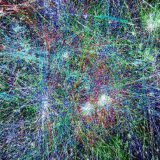Bridging the Gap between “Us” and “them”

This week we read the novel Forgotten Country, by Catherine Chung. You can find the main premises of the book here. In class I couldn’t help but notice the the interplay between moral obligation and refugees.
The question that splits America is a complex one. Should we take responsibility for the people’s lives we disrupt through war or international policies? An often overlooked reason for migration to the United States is international policy. Including policies that do not directly affect migration. For example, an effect of the North American Free Trade Agreement (NAFTA) was that it made it impossible for rural farmers in Mexico to sell corn without going bankrupt, according to Seth Holmes from Fresh Fruit, Broken Bodies. They felt that they had no choice but to migrate to America under the radar for work, or else they would starve. It brings to question whether the risk of destroying people’s livelihoods was weighed against corporate interests and riches. What makes us so desperate to raise our GDP at the detriment of others or our neighbors?
The problem right now is that our ideals are confusing. As an American in a capitalist society, we are supposed to worship riches as the capstone of life, no matter what the cost is. Our society is built to keep us in ignorance of our global economic footprint. Should we turn our backs on our allies? We created the circumstances for many instances of immigration to the United States. Viet Nam? Korea? Iraq? Afghanistan? Mexico? Simultaneously, we allow immigration from specific countries as a strategy of influence.
We are left to decide between moral responsibility and self-preservation. When it comes down to it, these are the reasons that we take action for. We make a choice between helping others and keeping our position of power and influence in the world. It is very difficult to operate a nation of 300 million people with one of the largest economies the world has ever seen without incurring division among its members. Despite the feeling of moral obligation to help others, the people that run the show do so if the benefits outweigh the cons. I mean, that is the purpose of the government: to make sure the nation continues.
Perhaps, the scale I use to observe this conflict between moral responsibility and self-preservation lies outside my own scope. I am slightly biased towards moral responsibility. I care a lot about humanity. Simultaneously, I also know the importance of self-preservation. After all, we are creatures of survival. When we don’t know about the cultures, customs, traditions, and language of another culture, we may be insulted by or come to fear another group much easier. Fear drives us to sustain what we have. If we do not invest in the effort to understand every other culture on this earth, then each nation will live in self-preservation mode forever.
The good news is that advancing technology is bridging the gap between people and their fears of whoever we might perceive as “others.” Once we realize we are all part of the same family, under one planet, then perhaps our priorities will shift. Until then, the problem remains: we just cannot understand each other.















Sometimes, one material can’t meet the needs of using, you need to combine two or more materials. They can form special materials which can satisfy you, and they are composite materials. For example, although the fiberglass material has good mechanical strength, the fibers are loose each other. It can only bear the tension, but unable to withstand bending, shear, and compressive stresses. Also, the glass fiber is hard to be made a fixed geometrical shape, it has a soft body. If you composite these glass fibers with polymer matrix together, you can make them into the final product with complex shapes and high stiffness. As a result, it can not only near the tension, but also bending shear, and compressive stress. This constitutes a fiberglass reinforced polymer matrix composite.
Últimamente he estado navegando en línea más de tres horas, pero nunca descubrí un artículo que llame la atención como el tuyo.
Es un precio encantador suficiente para mí. Personalmente, si todos los propietarios de sitios web y blogueros hicieran un excelente material de contenido como
lo hizo, la web será mucho más útil que nunca.
https://www.sportstoto.link/